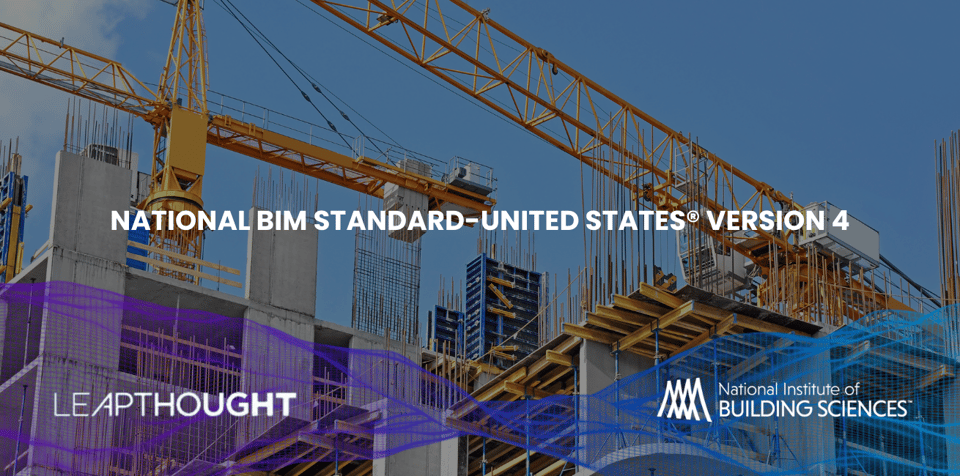The rise of openBIM, with its emphasis on open standards and collaborative workflows, is redefining the building information modeling (BIM) landscape. This approach encourages seamless data exchange and communication across project teams and also catalyzes standardized processes, universal accessibility, and ultimately, improved project outcomes.
Discover the practical merits of embracing openBIM, and learn how the approach can benefit your entire organization and its stakeholders to ensure success and a competitive edge.
The connection between openBIM and open standards
OpenBIM is working with BIM using open standards. While BIM generates models in native or proprietary formats—requiring collaborators to use compatible software—openBIM adopts a universal format accessible to all, irrespective of their toolset. Rather than opening up full access to change the model without knowledge or permission, open standards safeguard the original files. Publishing the model in an open exchange format enables individuals to view, measure, and use its information—while still protecting the original file.
Benefits of openBIM
OpenBIM offers a universal open standard that breaks down barriers to bring architects, engineers, and contractors together and streamline projects. The approach helps AEC organizations move forward in each project with confidence that they’re gaining the most value, achieving several key benefits:
IMPROVED COLLABORATION
OpenBIM and open standards play a crucial role in fostering collaboration among teams and stakeholders by helping them work toward a shared vision. Vendor-neutral workflows in formats such as IFC, BCF, COBie, CityGML, and gbXML enable designers and engineers to seamlessly exchange data regardless of the software tool they use.
This interoperability improves project life cycles by enabling the smooth import and export of 2D drawings, schedules, tender specifications, and other BIM data between tools without losing information. By enhancing predictability, improving overall performance, and elevating safety standards within the collaborative framework, this model allows teams to achieve better project outcomes.
REDUCED VENDOR LOCK-IN
The interoperability of openBIM provides flexibility. Because different tools talk to one another bidirectionally, each role can continue to use preferred platforms rather than a single vendor or suite of tools. Choose the right tools and workflows for you and easily share data with project stakeholders.
DATA ACCESSIBILITY
The long life cycles of big projects, public sector projects, and infrastructure assets require long-term data accessibility. OpenBIM and open standards ensure project information remains consistently available to stakeholders, from conception through hand-over, refurbishment, and eventual demolition. This enables sound decision-making at every stage.
DATA CONSISTENCY, QUALITY ASSURANCE, AND REGULATORY COMPLIANCE
The interoperability of openBIM ensures data can be shared without losing reliability. Because open standards incorporate industry-specific regulations and requirements, BIM managers can ensure that projects maintain regulatory compliance with laws and standards. As a result, operations spot otherwise expensive errors early and can avoid legal ramifications more readily.
FUTURE-PROOFING
As a dynamic solution, openBIM flexibly adapts to evolving technology and industry trends. Engineered for accessibility, it aligns with industry best practices, emphasizing standardized processes and data structures.
Consolidating information from architects, engineers, and contractors, openBIM establishes a single source of truth, ensuring a consistently updated model. This not only minimizes errors and conflicts, but also introduces efficiencies that improve communication, decision-making, and transparency throughout the project life cycle to foster successful outcomes.
Leverage the benefits of openBIM with FulcrumHQ
Move from bottlenecks and silos to collaboration and quality. OpenBIM creates efficiencies for your operation to move through the project life cycle successfully and foster interoperability, safeguarding data integrity in the long term.
LeapThought’s FulcrumHQ is optimized for interoperability by leveraging open standards, enabling all project stakeholders to keep using preferred tools. Use it to democratize BIM access across the organization—streamlining everything from 2D drawings, schedules, and tender specifications to real-time collaboration, clash detection, and model checking.
Ready to learn more about how LeapThought and FulcrumHQ integrate openBIM, open standards, and open interoperability? Schedule a no-risk consultation with our expert team.






